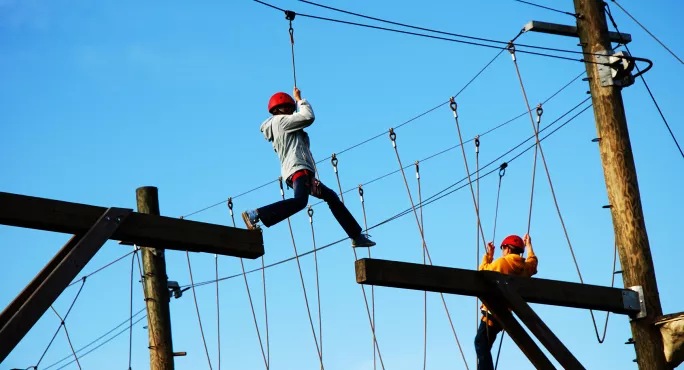- Home
- Teaching & Learning
- Primary
- Transition: We made Year 6 more like Year 7 - and it’s helped
Transition: We made Year 6 more like Year 7 - and it’s helped

Transitioning from Year 6 to Year 7 can be a daunting journey for students.
In my time as a Year 6 leader, students regularly came back to see me saying how much they missed primary and their class teacher. They also bemoaned the perceived increase in homework and testing (although I knew the actual amounts weren’t very different but the approach and delivery were).
As educators, we understand the significance of this shift and have worked hard to refine our approach to make transition as smooth as possible. Over the years our school has steadily increased our offer of transition activities to include orientation days, Year 7 ambassadors, buddy systems, introductory sessions with teachers, parent “tour-and-talk” sessions and more.
But we found that, despite these efforts, students still struggled with the cognitive load that the change required. We observed that a lot of the difficulties with transition stemmed from the systemic differences between primary and secondary education.
No amount of early information and familiarisation could fully prepare students for the new demands. We realised that they needed more than just exposure; they needed actual practice of these executive function skills, over time and with support.
The specialism model of transition
To address this, we introduced a specialism model for our Year 6 pupils. This model serves as a midway point between the traditional primary class set-up and the secondary school structure, where students have different teachers for different subjects.
More on the transition from primary to secondary:
- Disadvantage absence gap widens in Year 7
- How “transition teachers” can bridge the divide
- Five tips for supporting primary-secondary transition
Each Year 6 pupil has a class teacher who also serves as their tutor. This teacher is responsible for teaching one of the core subjects, as well as for supporting the pastoral time. For other subjects, pupils move within the Year 6 corridor to different Year 6 teachers who specialise in different subjects.
Secondary science teachers come in to conduct Year 6 science lessons in the labs, providing an early introduction to the secondary school environment and lab-based learning.
Implementing this model has led to several notable successes. Pupils have shown significant improvements in personal organisation and executive function skills: for example, they have been better able to use their planners, organise their time and complete assignments.
They are better prepared for lessons and more adept at managing their materials. They are also now better prepared for the logistical aspects of high school, such as moving between classes and working with different teachers.
Having science lessons taught by secondary teachers in the labs has markedly improved pupils’ laboratory skills, giving them a head start in secondary science education. The model also allows teachers to specialise and deepen their subject knowledge, leading to higher quality teaching and learning experiences.
Changes and challenges
While the specialism model has brought many benefits, it also presents several challenges that we continue to address. We have to ensure that Year 5 students are sufficiently prepared for the changes they will face in Year 6, so we are working on enhancing our Year 5 curriculum to include more activities that build the necessary skills for this transition, and we are also running additional transition support sessions.
It is vital to ensure that strong pastoral relationships are maintained, especially between Year 6 pupils and their class teacher. We are exploring ways to balance specialised subject teaching with the need for consistent pastoral care. Some teachers prefer traditional class teaching roles and may not be comfortable with the specialised teaching model. We respect these preferences and ensure that teachers are placed in roles that align with their strengths and preferences.
The transition from Year 6 to Year 7 is a critical phase in a student’s educational journey. By introducing the specialism model, we have created a more structured and supportive environment that better prepares students for the challenges of secondary school.
While there are still areas to refine, the positive outcomes in student readiness and skill development are promising.
Stephanie Fedorowicz is deputy principal at St Joseph’s Institution International School in Malaysia
For the latest research, pedagogy and practical classroom advice delivered directly to your inbox every week, sign up to our Teaching Essentials newsletter
You need a Tes subscription to read this article
Subscribe now to read this article and get other subscriber-only content:
- Unlimited access to all Tes magazine content
- Exclusive subscriber-only stories
- Award-winning email newsletters
Already a subscriber? Log in
You need a subscription to read this article
Subscribe now to read this article and get other subscriber-only content, including:
- Unlimited access to all Tes magazine content
- Exclusive subscriber-only stories
- Award-winning email newsletters
topics in this article



